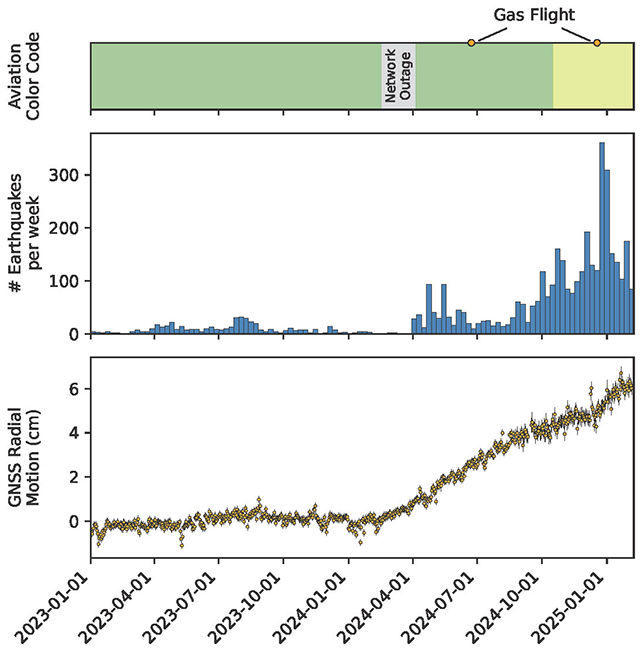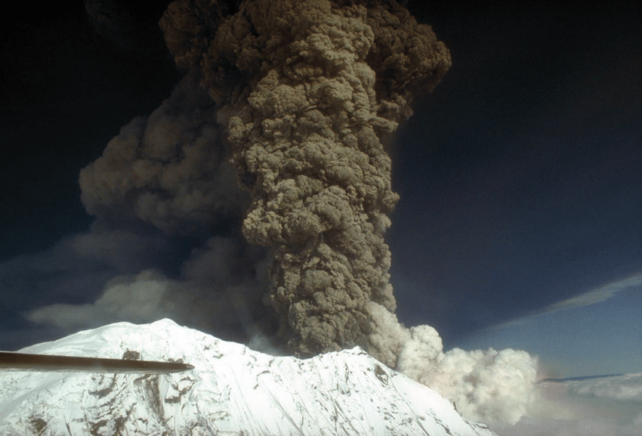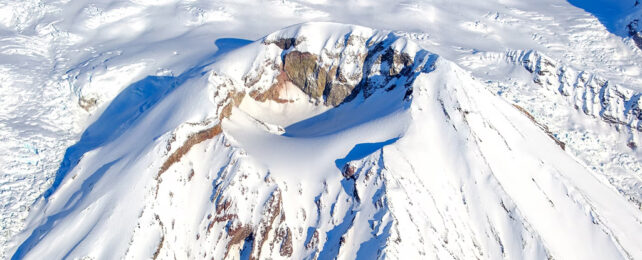Mount Spurr in Alaska – rising some 3,370 meters or 11,070 feet above sea level – could be about to erupt, with the number of small and recent earthquakes in the area now into the thousands.
Volcano seismologist Matthew Haney, from the Alaska Volcano Observatory in Anchorage, told Julia Jacobo at ABC News that the chances of an eruption now stand at about 50-50. That's after a noticeable increase in activity over the past 10 months.
As the volcano is only 130 kilometers or 80 miles west of Anchorage – population 286,075 – there's a real chance of danger to life. The city could be cloaked in a dust cloud if an eruption happens, as has happened in the past.
The video below shows the fallout of a 1953 eruption from the same volcano, which shot an ash cloud more than 10,000 meters above sea level. There's footage of people wiping ash from their vehicles and a snapshot of a headline from the Anchorage Daily News that reads "City 'Digging Out'." No deaths were associated with the eruption:

"Unrest continues at Mount Spurr, with numerous small, shallow volcanic earthquakes detected beneath the volcano," explains a recent volcano notice from the United States Geological Survey (USGS).
"Earthquakes are being located under the north side of the Spurr summit vent over the past day."
The image below shows the steady increase in earthquakes gathering in the region as well as their distance from the volcano.

The last eruption from Mount Spurr was actually three eruptions, which happened across several months in 1992. The airport at Anchorage was forced to close for 20 hours because of the cloud of dust and ash that enveloped the city.
There was a single fatality reported – from a heart attack triggered by shoveling ash fall – as well as a couple of millions of dollars of damage. Then, as now, there were several months of activity build-up.

Besides the small quakes, scientists have noticed the volcano swelling by about 6.4 centimeters (2.5 inches), according to Haney – another sign that something is building up below the surface, ready to blow.
However, it's not quite time to take emergency measures yet. Similar rumblings from Mount Spurr were recorded in 2004 and 2012, but weren't followed by eruptions – and this could be another similar scenario.

In addition, the experts at the USGS say more seismic activity than we've seen so far would be expected before an eruption, including around the fumaroles or vents in the rock. Hopefully, plenty of advance warning will be given if an eruption is about to happen.
"Based on previous eruptions, changes from current activity in the earthquakes, ground deformation, summit lake, and fumaroles would be expected if magma began to move closer to the surface," says the USGS.
"Therefore, it is very likely that if an eruption were to occur it would be preceded by additional signals that would allow advance warning."
Volcanologists are now keeping a very close eye on Mount Spurr to try and get a better idea of what's happening deep down in the rock. As we know from very recent history, these eruptions can be monumental.
